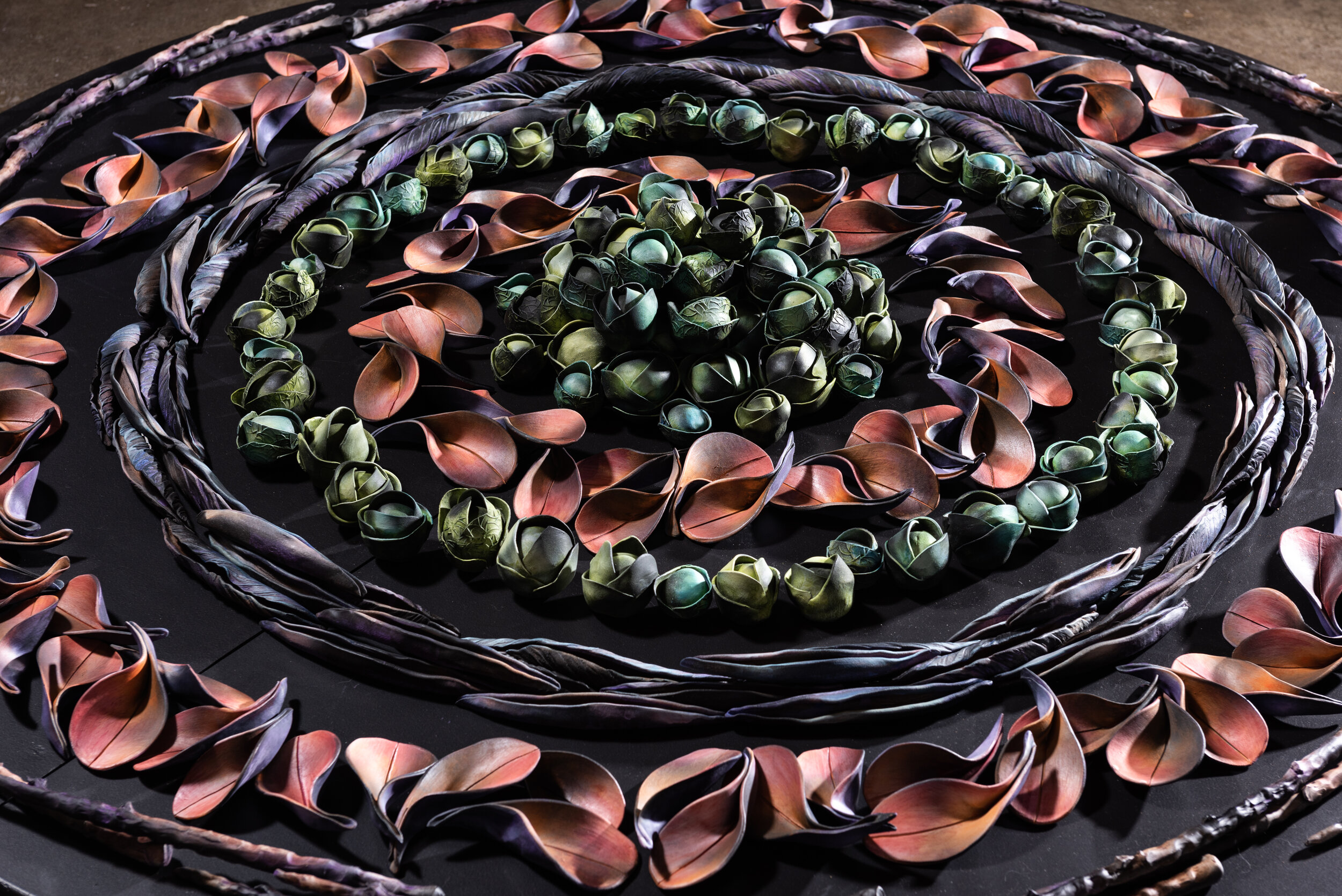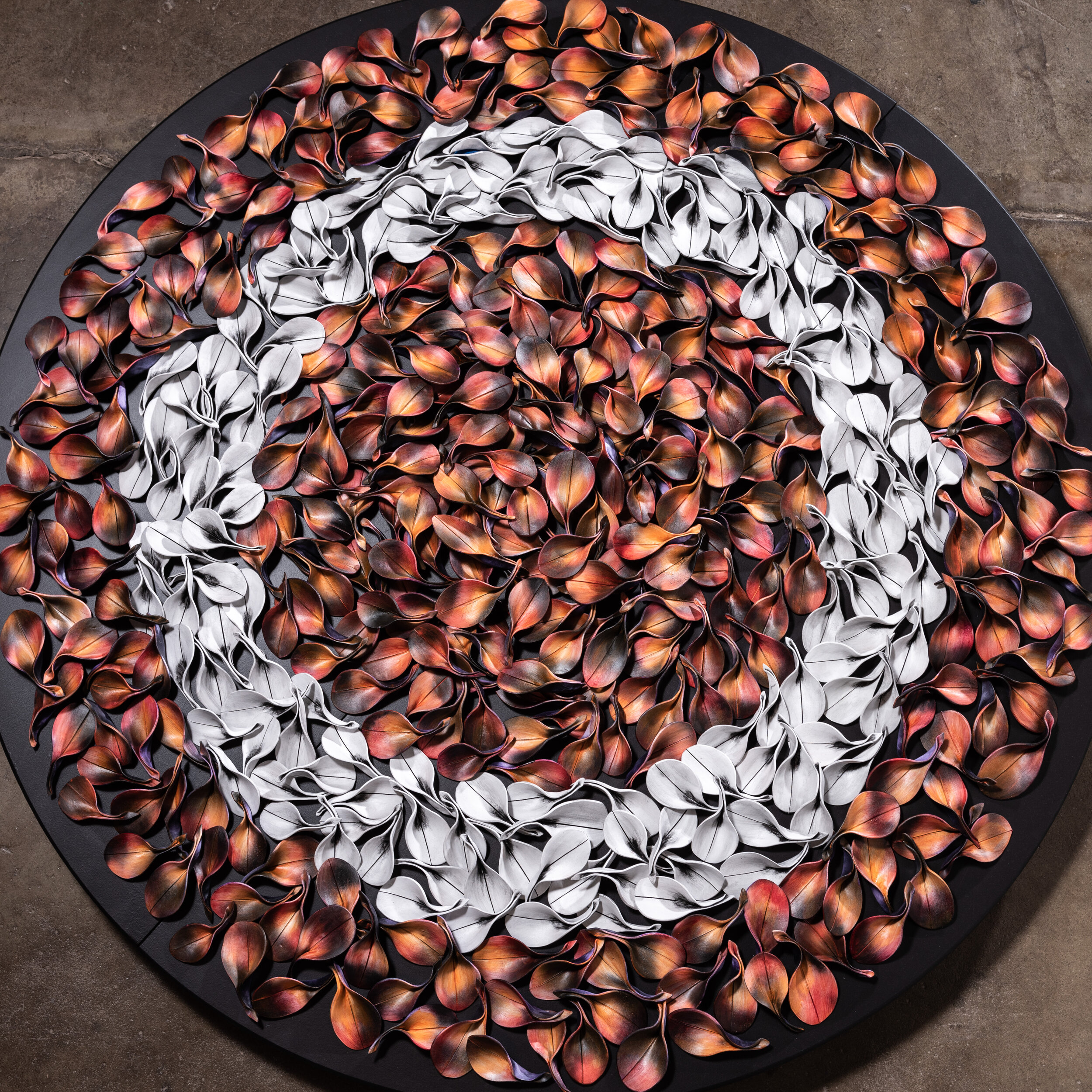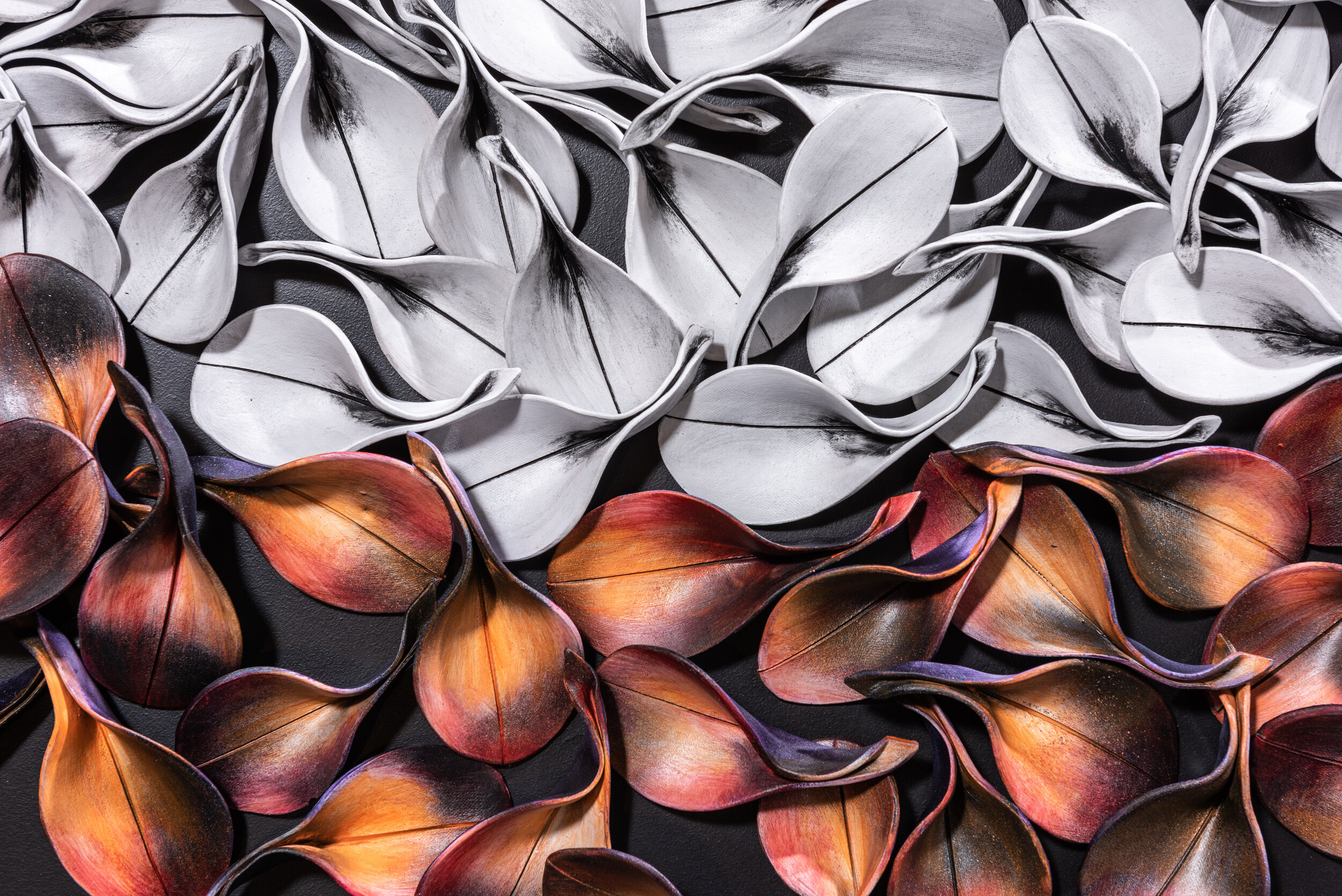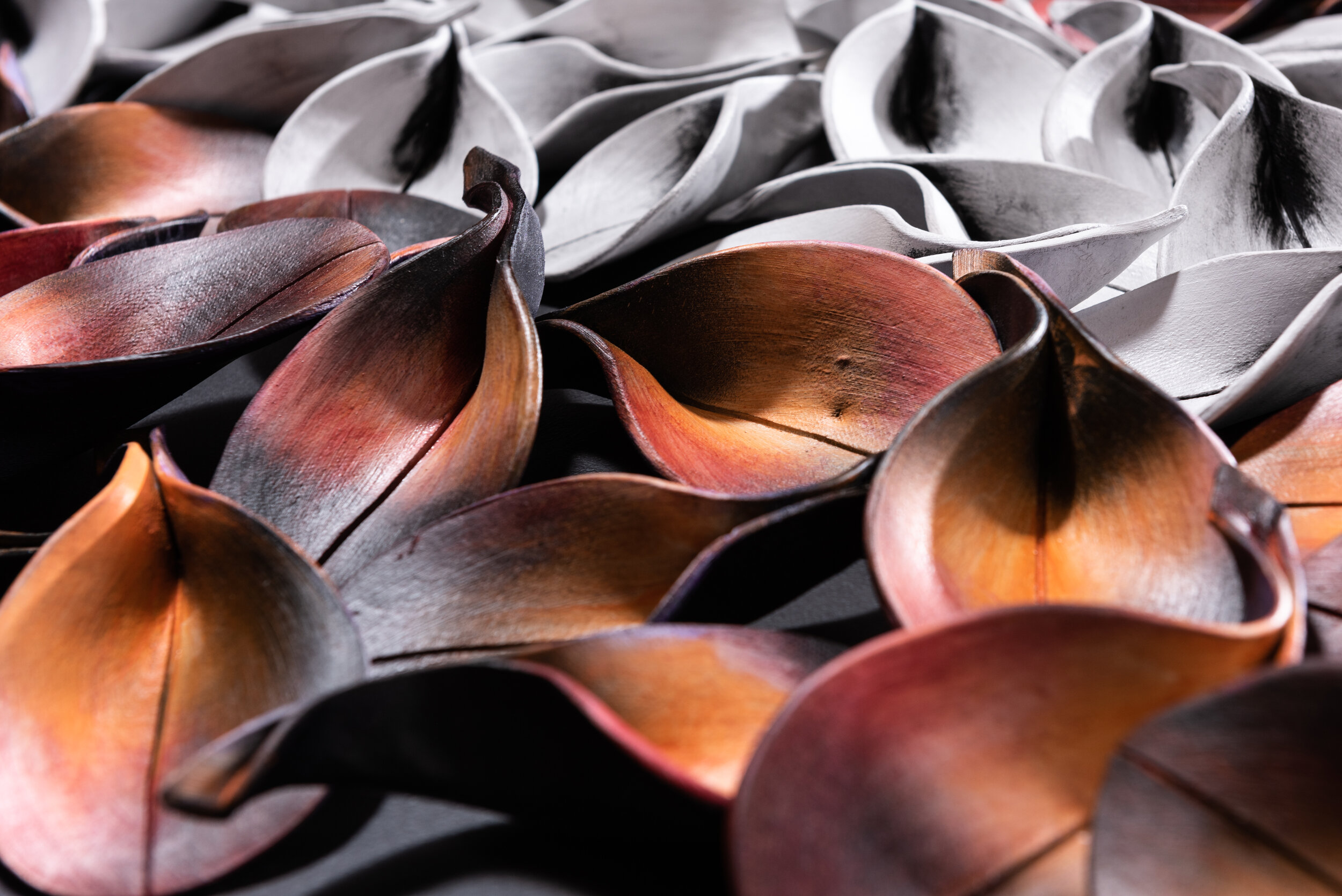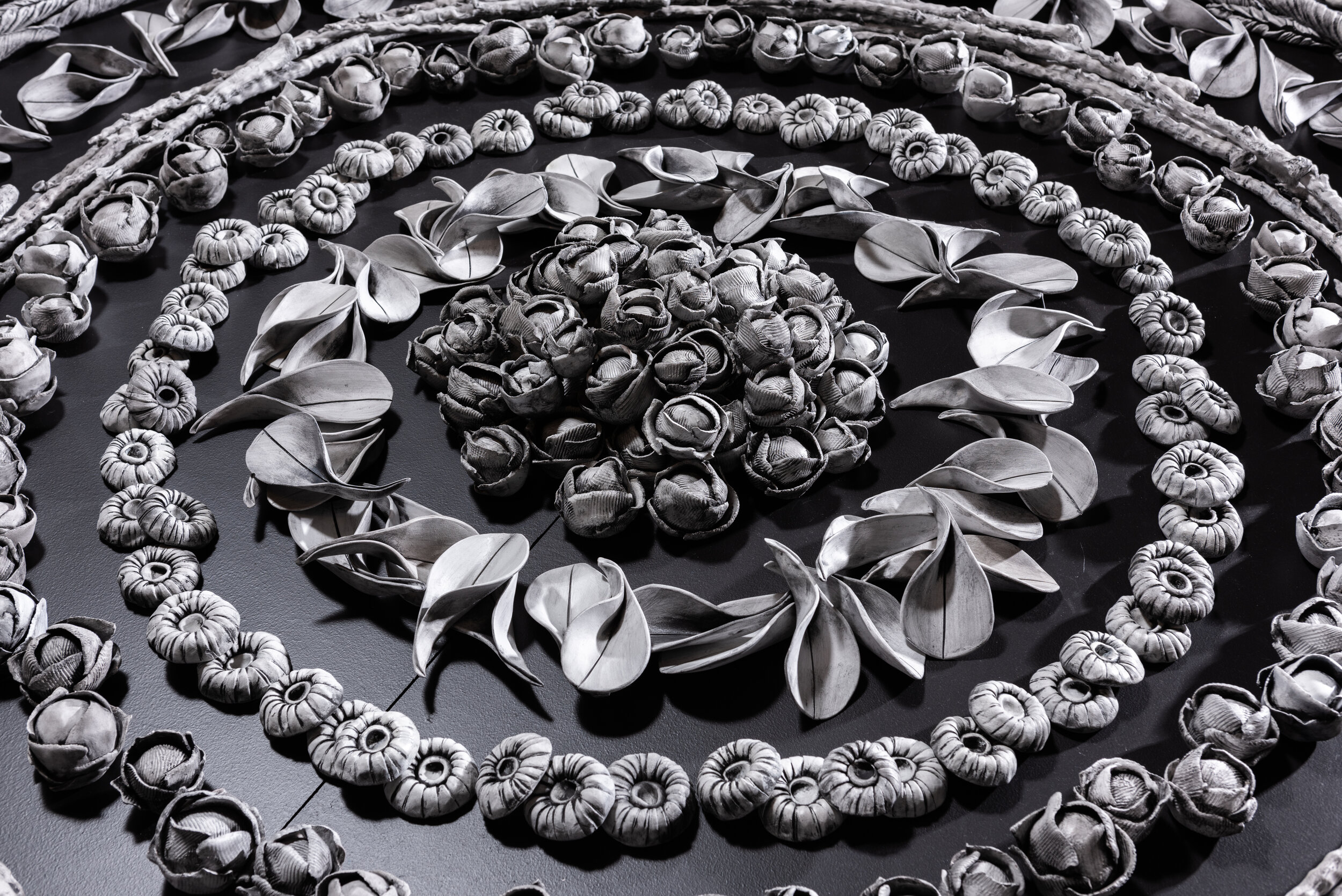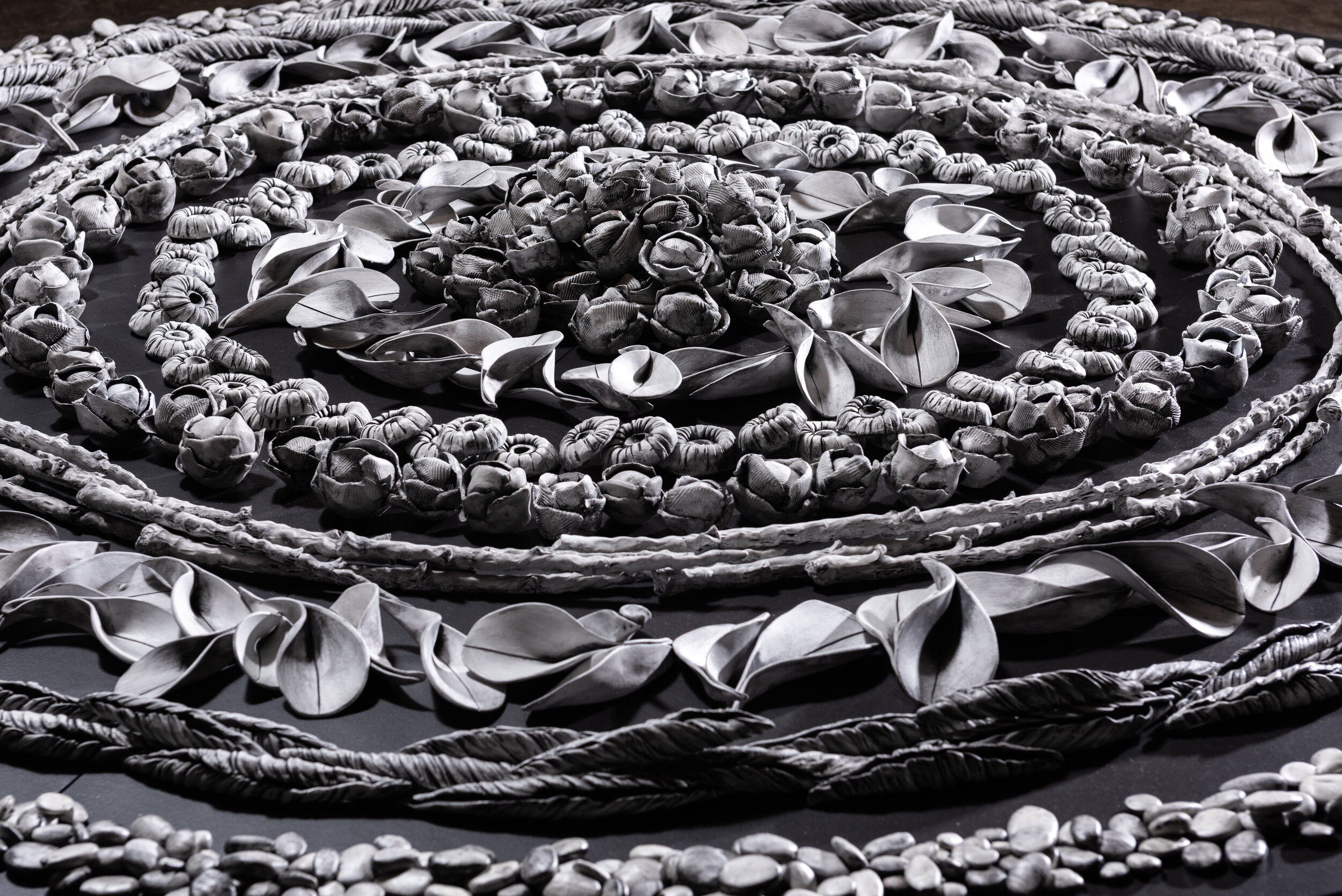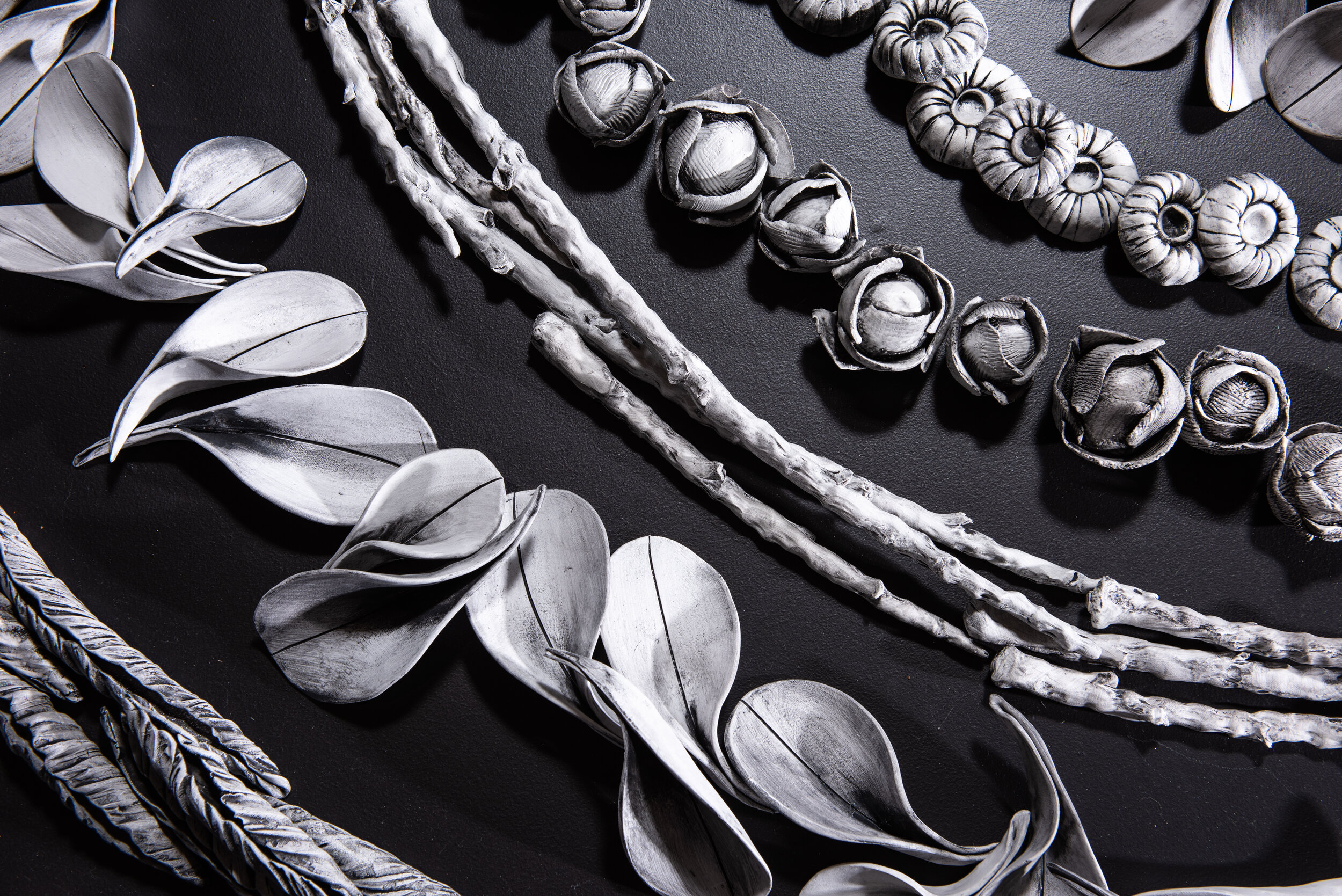RE-NEW
Whitney Forsyth is a full time studio artist and accomplished art professor who lives in Tulsa, Oklahoma. She served as an Associate Professor of Art at The University of Tulsa from 1999-2016. She grew up in Manitou Springs, Colorado and began working with her hands and clay at an early age. She took her first art classes at Bemis School of Art at the Fine Arts Center in Colorado Springs. Forsyth received a BFA from Oklahoma State University and an MFA from New Mexico State University. She has been making large scale ceramic sculpture and installation for the majority of her art career. Her ceramic work has been exhibited in art centers, galleries and museums in the US, as well as private and public art collections.
RENEW
The mandala is a symbol of wholeness that is found in cultures around the world. The symbolic diagrams reflect the symmetry of natural forms, the cycle of life and the circle of community. From ancient Hindu mandalas to Native American sand paintings, Celtic knot work and Christian rose windows, they promote spiritual health and wellbeing.
Mandalas use circular arrangements of objects, intricate designs, repetitive patterns, and beautiful colors as visually engaging representations of creation and life’s journey. They encourage the viewer to sit, look and listen. Through contemplation, meditation, and prayer, mandalas are often used to help connect the earthly with the spiritual, to help us see beyond ourselves. When the eye is allowed to move throughout the mandala it often brings understanding and clarity.
Forsyth’s recent ceramic work uses the mandala as a creative form to engage similar meaning. She uses repetitive natural forms, an integral feature in her ceramic work, to represent community, the relationships we have and rely on for wholeness, balance, and purpose. Forsyth’s mandalas reflect both individual and collective life journeys. They emphasize diversity and uniqueness beautifully meshed in larger numbers to create strength and meaning.
She recently returned from a residency at Watershed Center for Ceramic Art in Maine where her interest in this form began. The studio was located in a beautiful agricultural valley surrounded by organic farms and lush forest. She invited a group of Tulsa based ceramic artists to join her there to explore new ideas and work in clay. The residency reinforced a strong sense of community which allowed for new ideas and work to be made. As a result, Forsyth was inspired by the round brick kiln located in the center of the Watershed studio as well as a large circular table in the middle of the ceramic studio. This simple table was used as a canvass for her first mandala.
The mandalas Forsyth chose for this exhibit specifically represent themes of building community, loss of community and restoring community. The individual shapes resemble natural found objects and their intricate assembly creates relationship and meaning. Color, or the absence of color, is also used symbolically. For example, the red brick clay with its rich natural color is from the historical brick factory where Forsyth had a transformative experience during an artist residency. Black and white encourages reflection and contemplation, quietness and stillness, created for those in waiting, seeking answers, perhaps experiencing grief, isolation, and the need for healing and restoration. Inspired by stained glass windows, multiple vibrant colors represent forward movement, energy, growth, strength and transparency. When these individual shapes, patterns, and colors are installed together in the complete mandala, they provide an engaging and impacting experience.
Forsyth’s mandalas have been installed in gallery settings, beehive kilns and prayer rooms. They represent her life journey, telling a story of where she has been and where she is going
Photo: Evan Beasley




